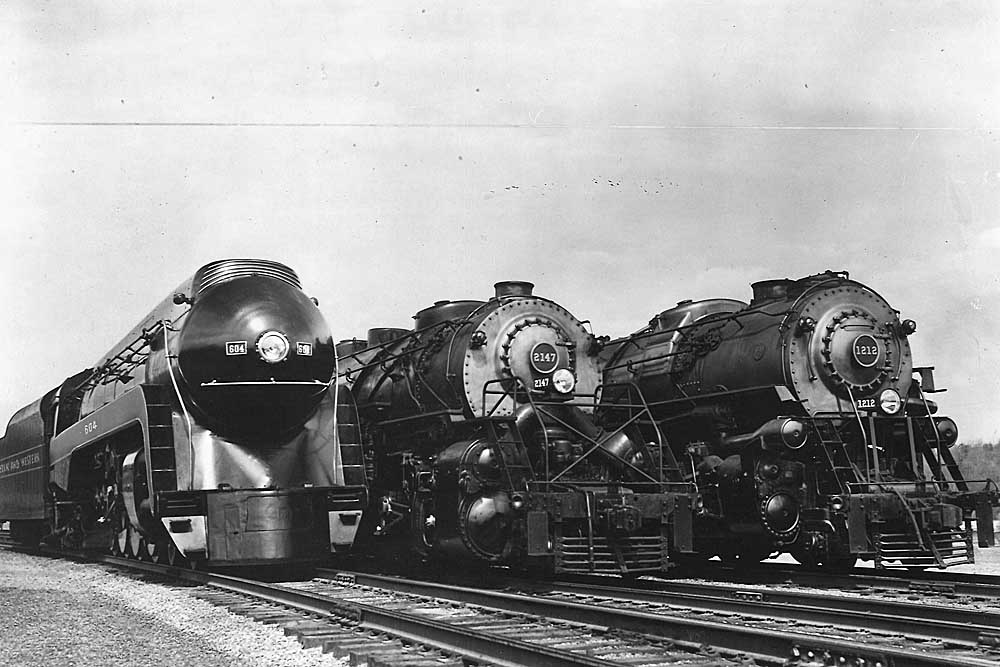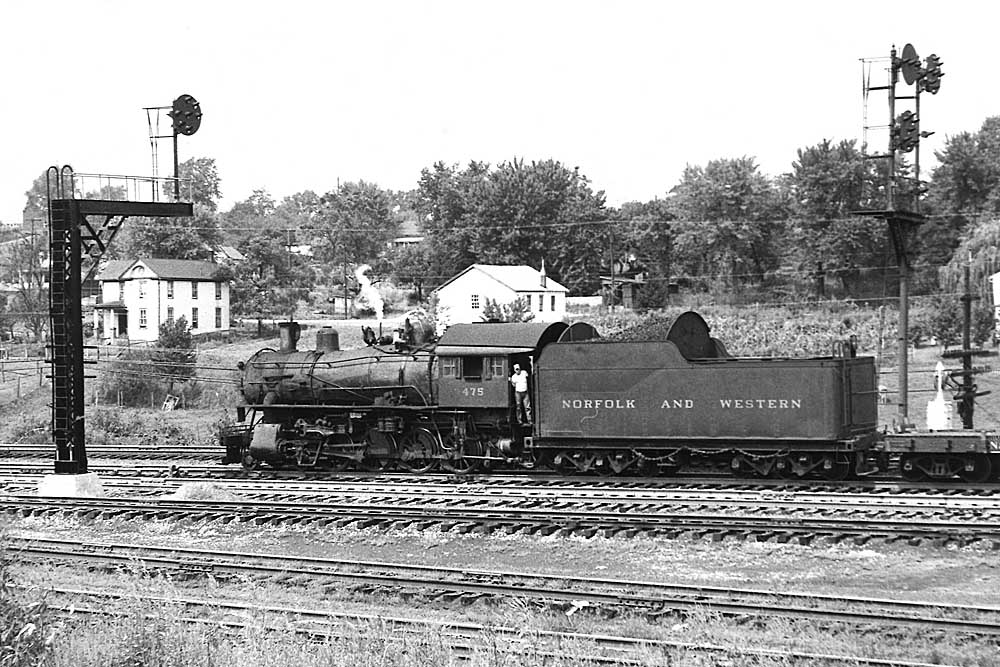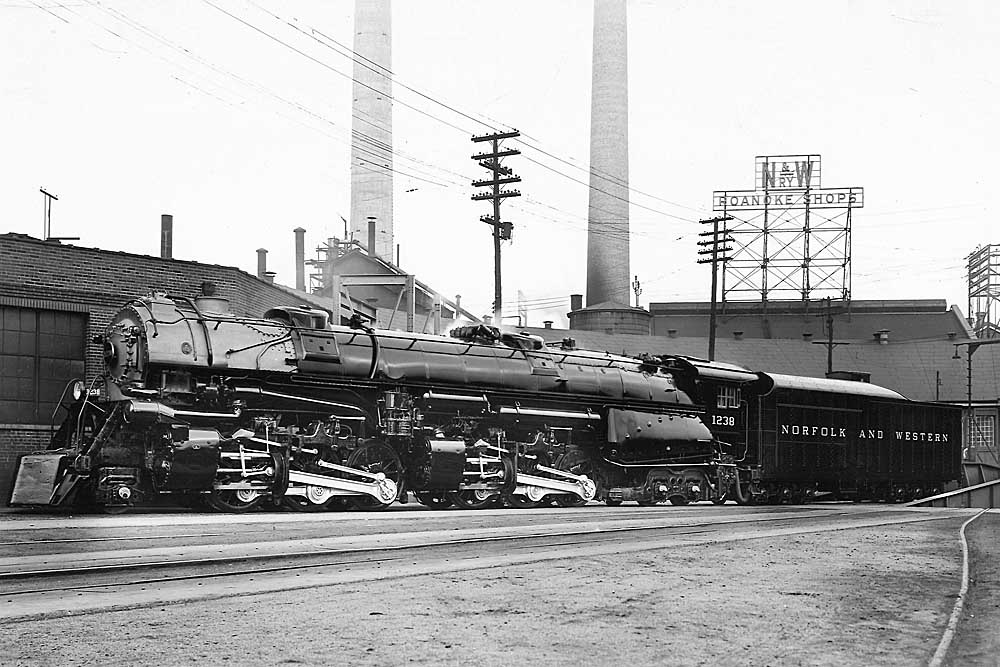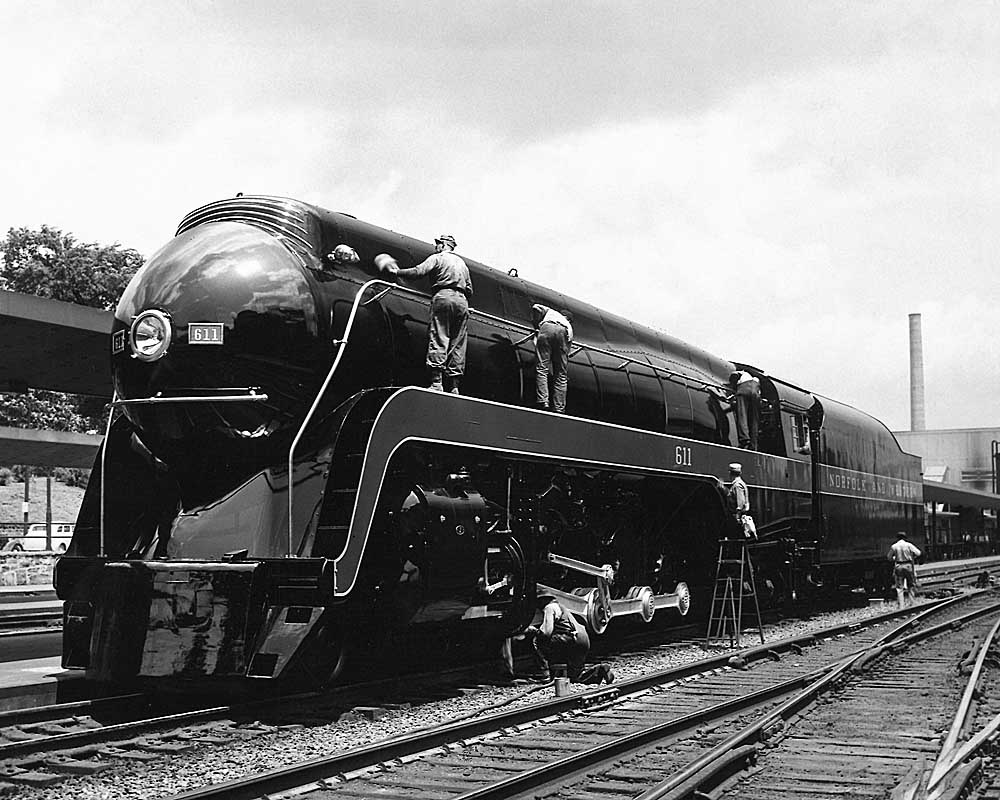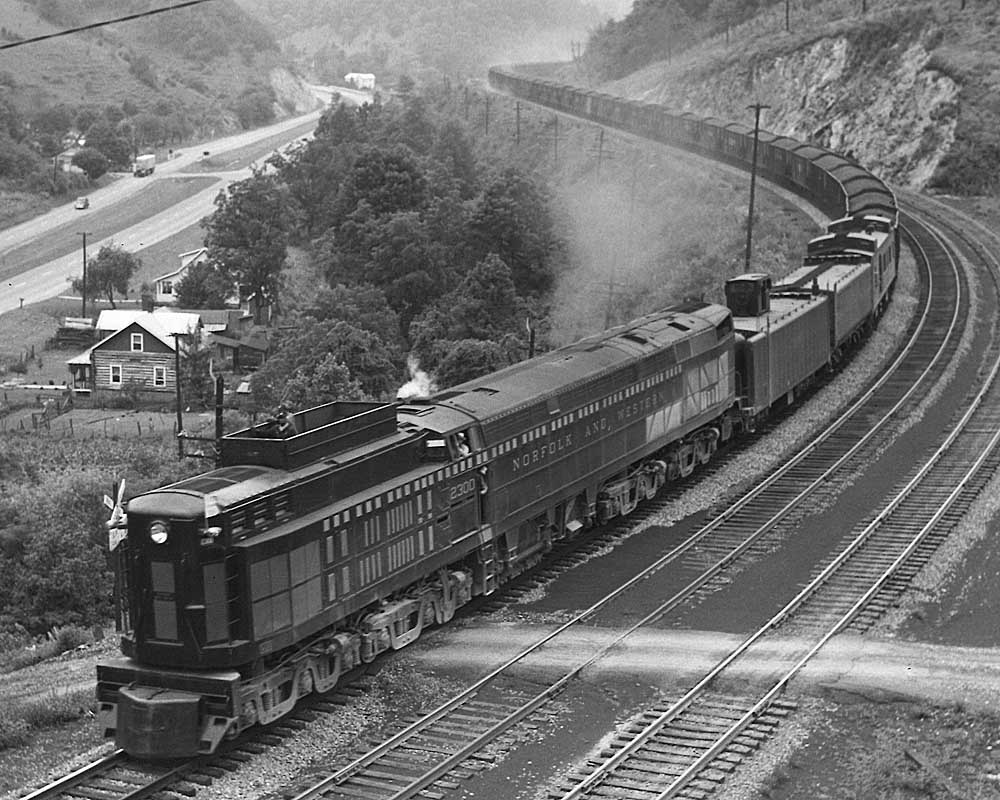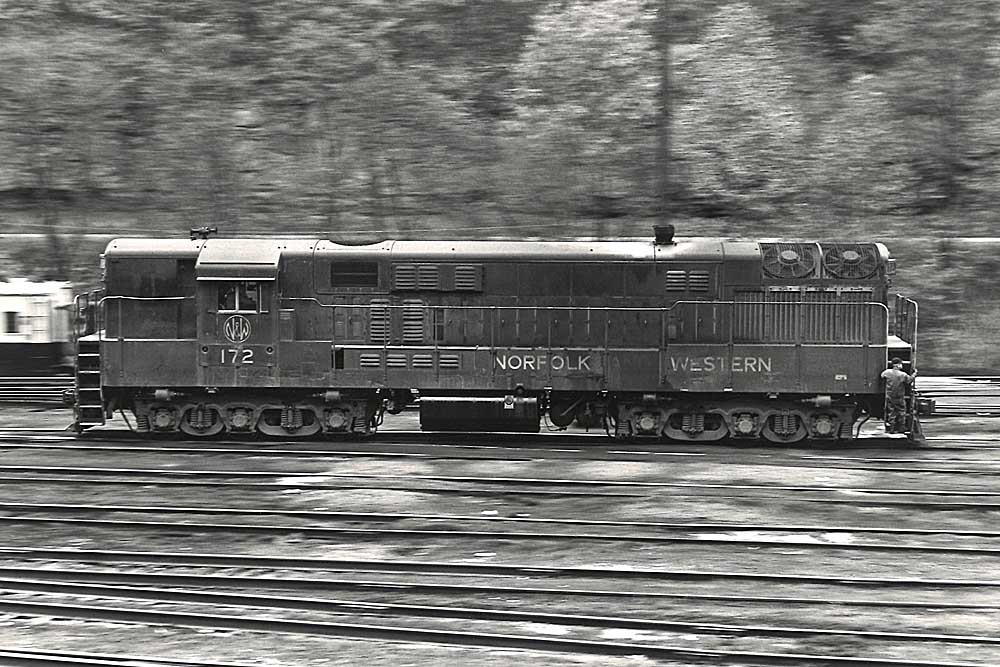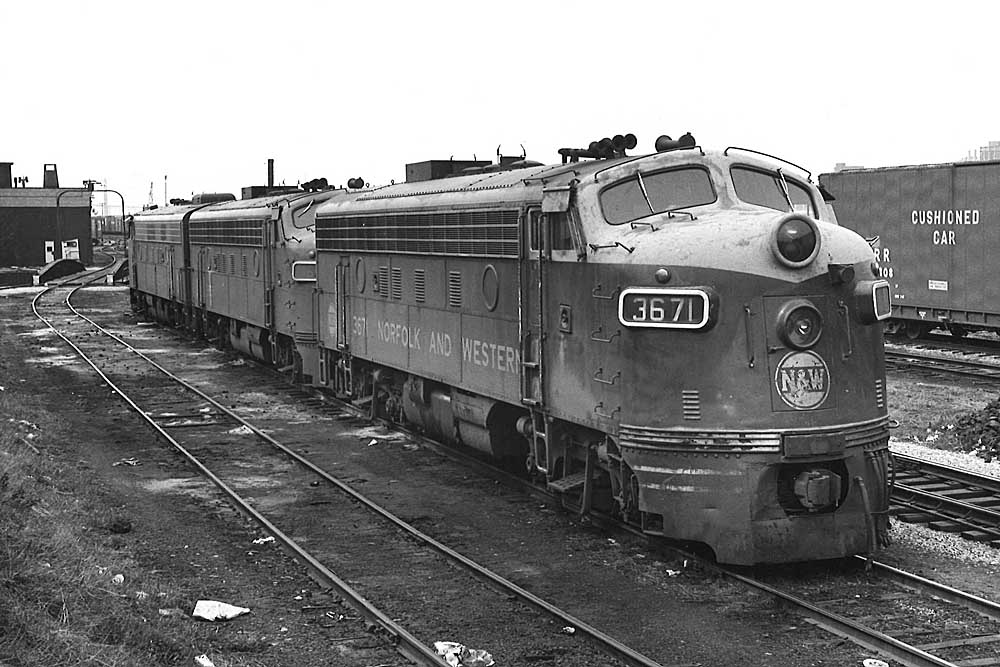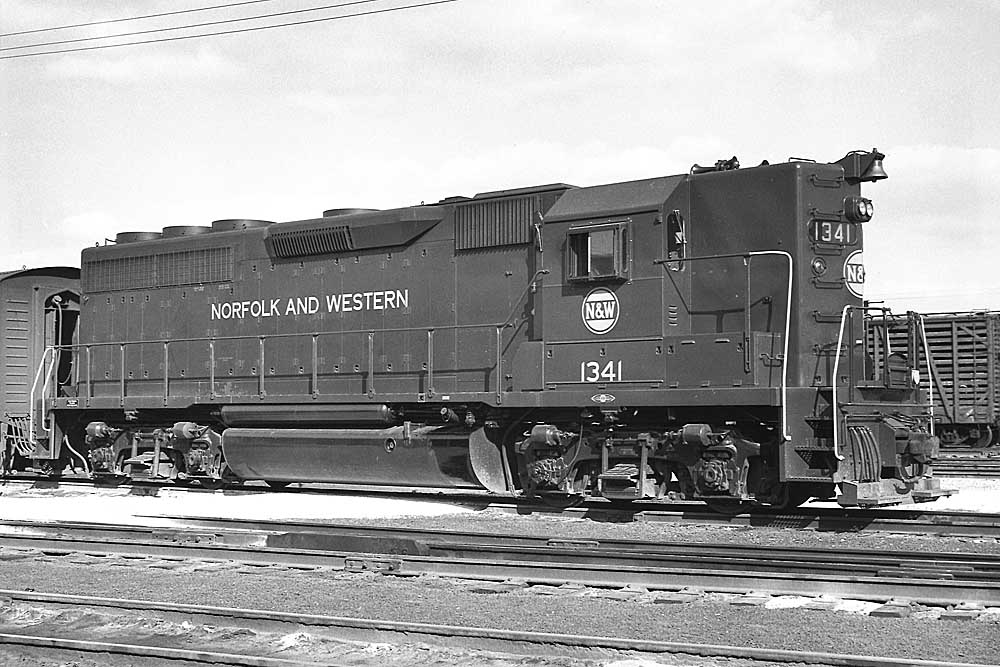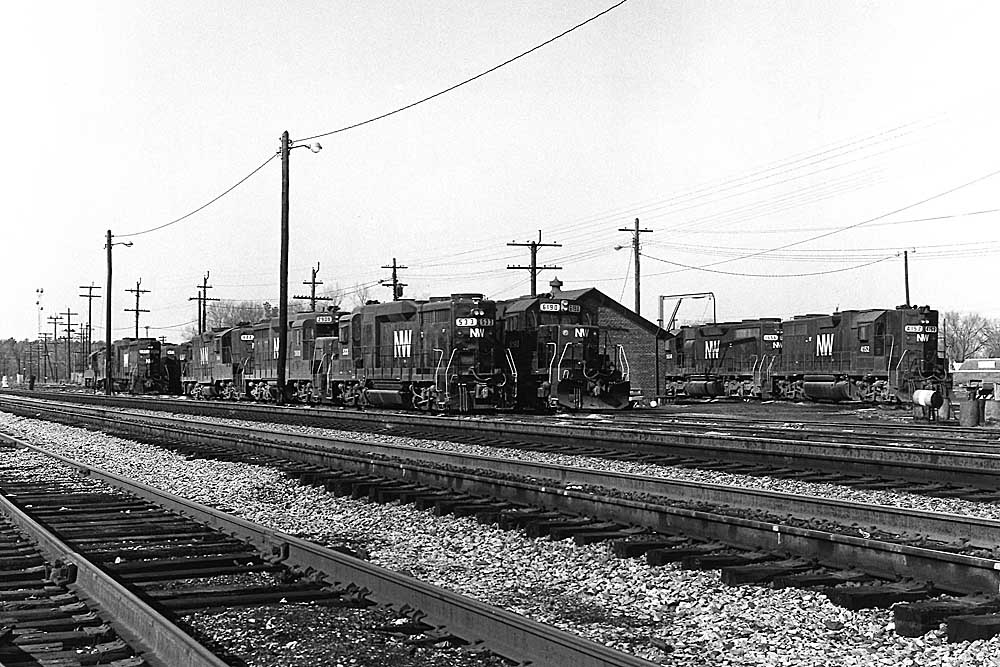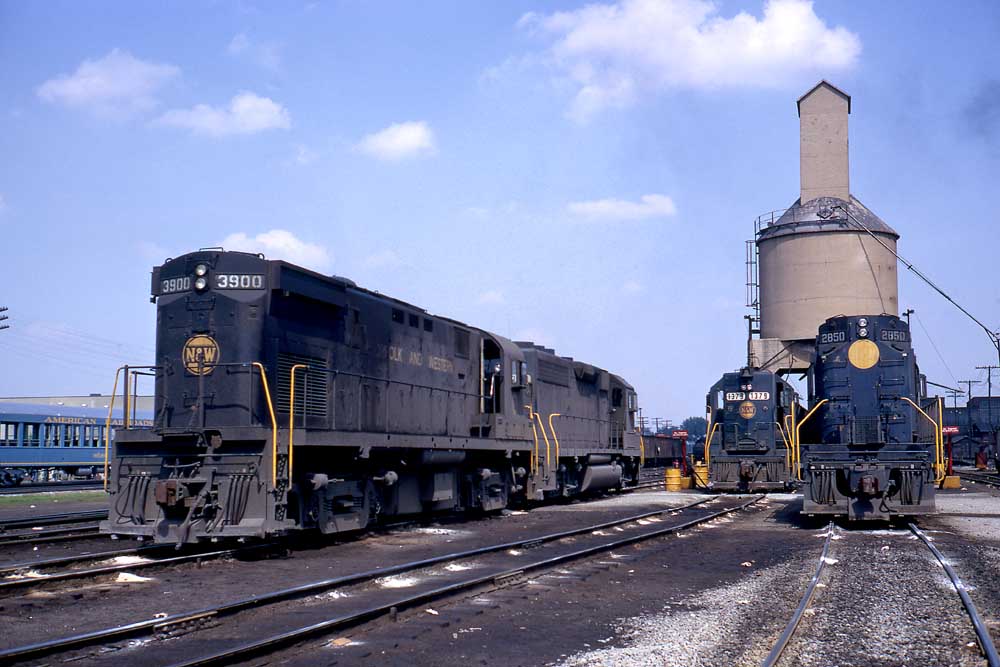The Norfolk & Western is Classic Trains’ fallen flag railroad of the month for January 2022

The Magnificent Three: J Class 4-8-4 No. 604, Y-6 Class 2-8-8-2 No. 2147, and A Class 2-6-6-4 No. 1212 in repose at Roanoke in April 1943. Norfolk & Western photo


A Norfolk & Western 4-8-0 returns to the main line at Christiansburg, Va., with train 112, the daily-except-Sunday mixed, on the 9-mile Blacksburg branch. The railroad had 286 such locomotives. No. 475, a 1906 Baldwin product, survives today at the Strasburg Railroad in southeastern Pennsylvania. Classic Trains collection


An A Class 2-6-6-4, No. 1238, poses for its official portrait at Roanoke. It was one of only five articulated steam locomotives built in the U.S. with roller bearing rods. Norfolk & Western photo


It’s May 29, 1950, and no less than six workers are putting the finishing touches on the brand-new J Class 4-8-4 No. 611 at Roanoke, Va. The railroad built 14 of these between 1941 and 1950. Norfolk & Western photo


In May 1954, N&W took delivery of a steam-turbine electric locomotive from Baldwin-Westinghouse. Numbered 2300, classed TE-1, and named Jawn Henry, it had a Babcock & Wilcox water-tube boiler working at 600 psi, weighed 818,000 pounds, and was rated at 4,500 hp. The stoker and injector were controlled automatically. LeRoy A. Scott photo


Fairbanks-Morse H24-66 No. 172 works the yard at Elmore, W.Va., in the early 1970s. Both the Norfolk & Western and the Virginian (which N&W acquired in 1959) purchased the model new. P. Rickershauser photo


EMD F7s inherited from the Wabash pose at Windsor, Ont., in April 1973. Some of the Wabash F units were built by EMD’s Canadian subsidiary at London, Ont., and were limited to service in the country. J. David Ingles photo


N&W’s GP40s were built with high short hoods in line with the company’s motive power policy at the time. These stood out compared with their contemporaries on other railroads. Louis A. Marre photo


A plethora of power lines up, ready for trains at Crewe, Va., in January 1981. Visible are four GP9s, three GP30s, and one each SD40, SD40-2, GP38-2, and C30-7. Curt Tillotson Jr. photo


At Frankfort, Ind., in 1969 we find an ex-Wabash C424 built for Mexico, two GP40s, and an ex-NKP RS11, among other units. The coal tower, and some of the roundhouse to the east, still stand today. J. David Ingles photo

Classic Trains editors are celebrating the history, heritage, and style of the Norfolk & Western Railway all through January 2022. So, please enjoy this photo gallery of Norfolk & Western locomotives selected from the archives of Kalmbach Media’s David P. Morgan Library.
Norfolk & Western locomotives served in the coal fields and later on high-speed freight in the Midwest. Because of this, the railroad had some notable steam locomotive wheel arrangements, such as the 4-8-0 and 2-6-6-4, and some legendary power such as the streamlined J Class 4-8-4.
The railroad famously did not purchase any new cab units but inherited both F7s and E8s from Wabash and Alco PAs from the Nickel Plate. In later years, Norfolk & Western locomotives retained the high short hoods that were prominent in the early years of dieselization but fell out of favor on other railroads.
Only from Trains.com!





